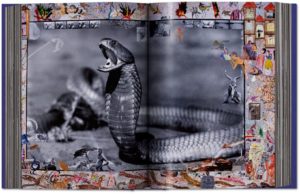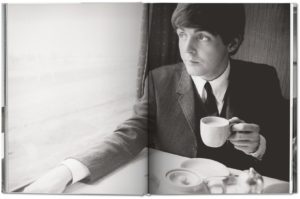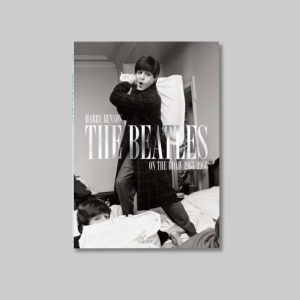A private photo session from 1974 with the iconic performer featuring many images seen here for the first time.
David Bowie’s unexpected death has invited intense scrutiny over the rich and complex imagery and signifiers in thevideos released for Blackstar, his last, enigmatic album. At press time for this book, a Bowie superfan alerted us to theremarkable similarities between these videos, particularly “Lazarus,” and the photo shoot that comprises the bulk of thisbook.
“David said to wish you all the best with this project,” replied Bowie’s assistant in October 2015, when Steve Schapiro wrote asking for asmall text contribution to this volume reproducing their epic photo shoot in Los Angeles from 1974. “We look forward to thebook next Spring! [of 2016].”
Bowie, by 1974, was evolving yet again in his spectacular journey as one of pop music’s most creative and brilliant minds.A music-writing tour-de-force, Bowie was also widely regarded as a fashion icon, pushing the envelope of sexuality andstyle. Bowie had introduced the world to Major Tom, lived the life of Ziggy Stardust, and had just launched Aladdin Sane;the albums Pin Ups and Diamond Dogs soon to follow.
Late that year, photographer Steve Schapiro seized upon a rare invitation from Bowie’s manager for a private photosession with the pop star in Los Angeles. The fruit of that day’s collaboration between Bowie and Schapiro would providesome of the most iconic album art and magazine shoots produced that decade, including album covers for the albums Station toStation and Low. The Thin White Duke was ascending.
These mostly never-before-published images represent Bowie at his most creative and inspired self and offer a rareglimpse into a collaborative process that created phenomenal iconography in the Bowie oeuvre. “From the moment Bowiearrived, we seemed to hit it off. Incredibly intelligent, calm, and filled with ideas,” remembers Schapiro. “He talked a lotabout Aleister Crowley, whose esoteric writings he was heavily into at the time. When David heard that I hadphotographed Buster Keaton, one of his greatest heroes, we instantly became friends.”
Bowie and Schapiro kidded and laughed about shooting a series of close-up portraits on a putrid green backgroundbecause they felt it was the worst possible background color for a magazine cover, and so they shot one on a lark-theimage eventually became a People magazine cover in 1976.
The first photo session started at four in the afternoon and went through the night until dawn. Bowie went throughcountless costume changes, each one seemingly befitting an entirely new and unknown Bowie persona. Most incredible,from a vantage point some 40 years later, was the costume and doodles of a particular session: Bowie dressed in blueslacks and cropped shirt, painted with diagonal white stripes, and scribbling what appears to be a diagram from the
Kabbalah. They show up again in the video accompanying the song “Lazarus” on the Blackstar album.
A delight for Bowie fans of all intensities and degrees, Bowie provides a rare look at a remarkable musical genius in thethroes of creative exploration.

















